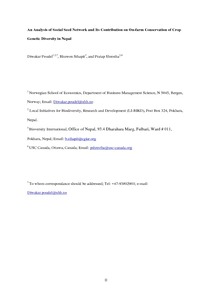Adoption and factors affecting on adoption of integrated pest management among vegetable farmers in Sri Lanka
The overuse and misuse of chemical pesticides has widely been reported in vegetable cultivation in Sri Lanka. While safer and environmental friendly pest and disease management methods such as Integrated Pest Management (IPM) are popular around the world, only little effort has been taken to promote IPM in Sri Lankan vegetable cultivation. Furthermore, farmers have not shown much interest on practicing IPM in vegetable cultivation.





